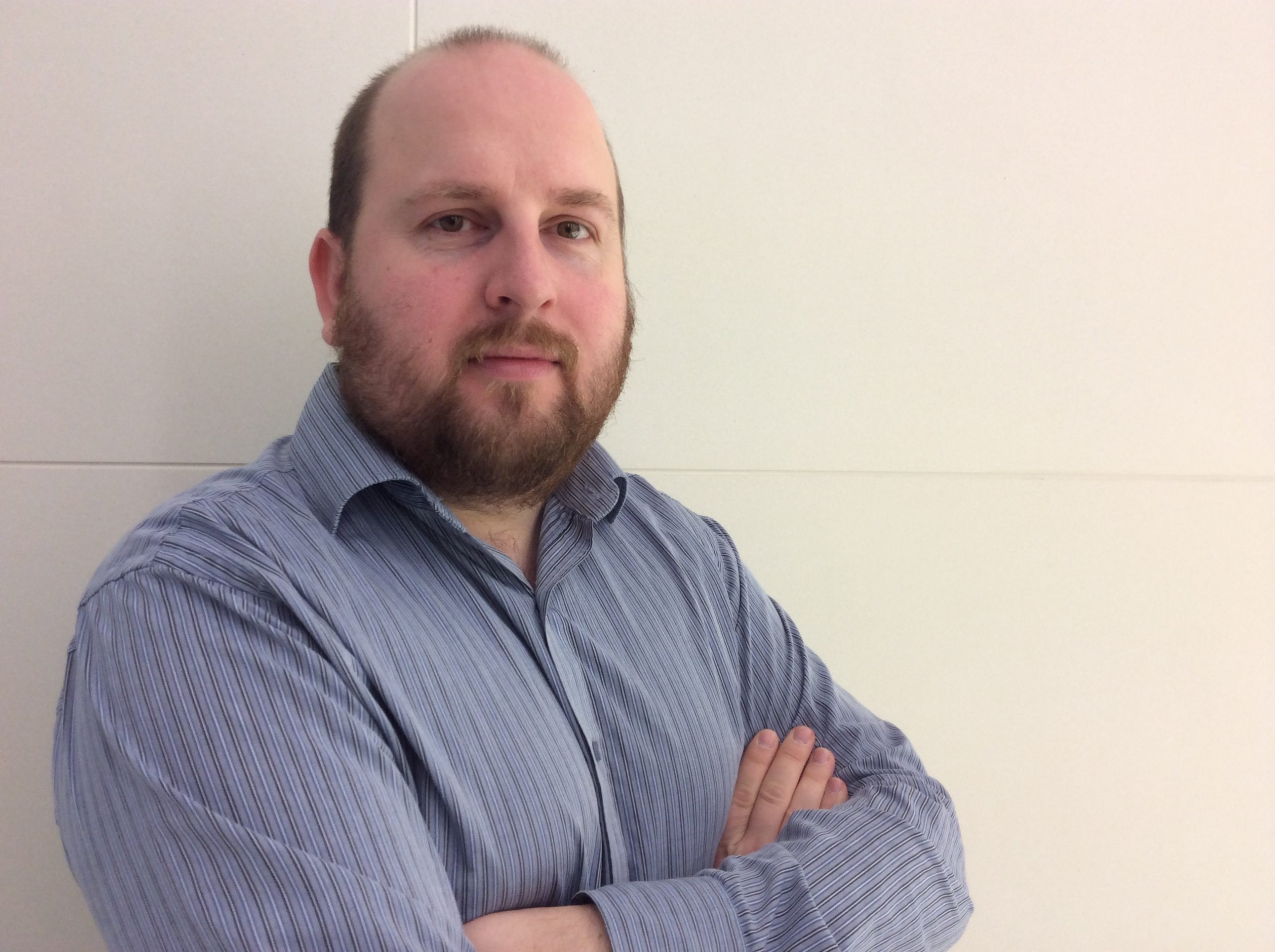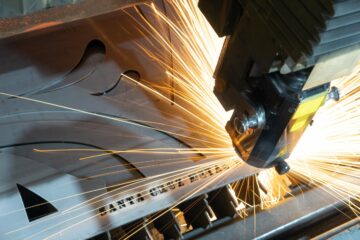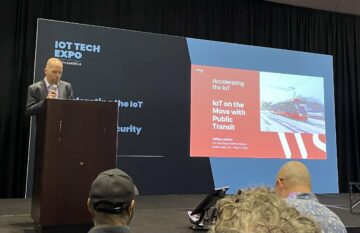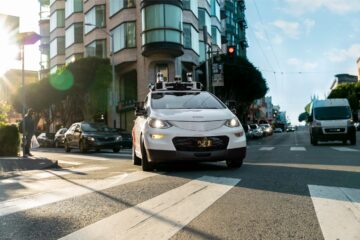
.pp-multiple-authors-boxes-wrapper {display:none;}
img {width:100%;}
TechForge recently caught up with Jason Mann, VP of IoT at data and AI leader SAS, as he explained how companies can utlise the Internet of Things effectively, and how the technology is improving sustainability around the globe.
What are the latest trends in IoT you’re seeing develop this year?
A major trend is the continued emergence of GenAI, which is further accelerating the adoption of AI in IoT.
With sensors more widespread than ever, producing ever larger volumes of data, AI is crucial to helping organisations transform that raw data into valuable insights and better decisions. And it is clear GenAI has a valuable role to play.
IoT sensors measure and gather data on so many important variables, such as the temperature in a petrochemical plant’s furnace, the vibrations of a massive wind turbine producing clean power, and the traffic flow in a city’s road network.
With AI and IoT, organisations can optimise the furnace temperature to produce higher quality gasoline or plastic. They can anticipate maintenance issues before a wind turbine fails, and through this predictive maintenance, keep the green power flowing to customers. And they can re-route traffic in real-time – through electronic signs and mobile alerts to commuters – to reduce gridlock and keep commerce humming while also reducing pollution.
GenAI is the hottest area within the business and technology megatrend of AI. And IoT analytics support GenAI-related efforts, such as the use of large language models (LLMs), and the generation of digital twins and synthetic data.
GenAI is a new approach to an old concept. For decades, organisations have used models to generate analytical insights. GenAI makes advanced analytics more accessible to a wider group of people, with varying job roles and experience. Now, more people can participate in analytical decision-making driven by data and AI.
Data from IoT sensors and IoT analytics augment and support GenAI approaches that can boost an organisation’s performance and results. And we’re seeing adoption in industries like manufacturing, energy, government and transportation.
Of course, to maximise the value from GenAI, people need to understand its capabilities and shortcomings. We are still in the early days of realising the full potential of GenAI technologies. Innovative organisations are taking an AI-first approach. They make AI and GenAI tools easily accessible to workers at all levels and encourage them to deeply integrate them into their daily work.
Ideally, everybody in the core process of a business should interact with models in the same way they interact with colleagues. This will drive quick adoption and encourage organisations to provide the necessary and user-friendly GenAI tools to overcome any structural or cultural hurdles.
Finally, it is important to clearly show that GenAI augments and supports rather than replaces human experts.
How can IoT help organisations, cities or countries be more sustainable?
IoT analytics help organisations turn data from sensors and edge devices into timely insights they can use to make better business decisions.
In the government sector, smart cities increasingly rely on the artificial intelligence of things, or AIoT, to become more sustainable while addressing challenges like traffic abatement and flood mitigation. Three examples:
- Cary – Cary, North Carolina, is a growing town within the state’s Research Triangle region (and home to SAS world headquarters). Cary has seen its population triple in the last 25 years, exceeding 175,000 people today. This influx of residents has led to a boom in new housing, shopping centers and businesses.
The town uses SAS Analytics for IoT – powered by SAS Viya, SAS’ data and AI platform, on Microsoft Azure – to ensure that citizens are better protected from flooding events, new development projects are properly vetted so they will not lead to flooding, and local watersheds are safeguarded.
- Istanbul – Istanbul, the business and commercial center of Turkey, has seen Its population double over the last 20 years to reach 16 million people. That means a lot of traffic…and data too.
City planners and engineers from the Istanbul Metropolitan Municipality (IMM), the local government for the city and surrounding districts, have built models of traffic patterns that help them better understand, predict, forecast and manage Istanbul’s traffic flow in real time.
IMM uses the AI and machine learning capabilities of SAS Viya to analyze historical traffic data and live data feeds from a growing network of sources, including traffic cameras, sensors, data readers, mobile applications and payment gateways. They can see when and where significant traffic is peaking, and more importantly, can predict and act on changes in traffic before they occur.
With this information, IMM can forecast and manage the city’s traffic challenges using congestion alerts, warning citizens of delays and surges before they are trapped in gridlock. By predicting the best routes, IMM is reducing greenhouse gas emissions by decreasing the volume of cars and trucks idling on roadways and shortening travel times.
For public transportation, the AI and IoT-powered system delivers insights from traffic and passenger data that helps IMM improve services, bus route availability and rider satisfaction, increasing the likelihood people will use these greener modes of transportation.
- Jakarta – Extreme weather has increased and intensified flooding events that threaten lives, property and commerce. Jakarta, Indonesia’s capital and home to 11 million people, has witnessed this new reality.
While the city has a long history of flooding, the last few decades have been especially challenging. Jakarta sits on wetlands laced by 13 major rivers and borders the Java Sea. More than 40% of its land is below sea level, and groundwater extraction has led to the ground sinking. Combine those conditions with stronger monsoons and higher tides caused by climate change, and the threat is very real.
Using SAS Analytics for IoT, the Jakarta Provincial Government has created a data- and AI-powered flood-control system that aggregates data from sensors across the city and weather forecasts into intelligent models. These models predict water levels in high-risk districts. City officials can then send push notifications to residents’ phones, close flood gates and prepare the city as much as six hours in advance of emergency flooding. Jakarta’s smart models not only prevent potential damage to the city but protect the lives of citizens living in flood-prone areas.
(Check out Jason’s recent blog post, A clear vision for the future of IoT and smart cities, for more examples of how IoT can help cities be smarter and more sustainable.)
What are the main challenges involved with adopting IoT technology and how can these be overcome?
Too many organisations still think of AI, IoT and advanced analytics as the realm of quantitative experts like statisticians and data scientists. data scientists.
This is no longer the case. As seen in tools like ChatGPT from OpenAI and Viya Copilot from SAS, GenAI continues to fascinate businesses because it makes AI and advanced analytics accessible to a wider group of people, with varying job roles and experience.
In manufacturing, this means equipment operators and front-line workers can use GenAI to answer important questions like “What are my biggest areas of concern on Line 3?” and “Where are the most common areas of failure in Operation B?”
By engaging with data and AI at a conversational level and in real-time, they can then act quickly to improve processes and minimise negative impacts.
Historically, if a machine on the manufacturing line threw an error code, workers would have to go to multiple systems to see what the code meant, how to repair it, and how the same issue had been treated previously. With GenAI, all that data is brought together in a single interface so these workers can assess and resolve issues quickly.
Another example can be seen in SAS Energy Cost Optimization, a solution that helps manufacturers reduce their carbon footprint and energy-related costs. With SAS Energy Cost Optimization, engineers can train their own models with just a few mouse clicks and without writing a single line of code.
And the solution’s explainers are conversational. Through text, they help engineers and others understand what’s driving energy consumption by product and over time.
How can organisations understand the business value of IoT?
Organisations can better understand the business value that IoT – and AI, GenAI and advanced analytics – can deliver by reading real-world examples of other companies and governments succeeding with these technologies. And overcoming many of the same challenges they are confronting.
(You can explore additional use case studies on the SAS website.)
How are digital twin technologies impacting AI and IoT adoption?
With digital twins, organisations can predict, simulate, experiment and find new approaches that can optimise operations, enhance worker safety, improve maintenance strategies, reduce emissions, mitigate flooding and much more.
A digital twin uses real-time data and contextual data (e.g., production schedules, maintenance data, engineering details) to create a mathematical representation of a real-world system. Such a system may be an individual asset such as an aircraft, a power generator, a manufacturing plant or a warehouse. These individual assets could also make up a more complex system such as a fleet of aircraft, a power grid or a global supply chain.
Digital twins are made possible by IoT technology, including internet-connected sensors, video feeds and other smart devices. These devices can detect and transmit massive amounts of real-time data about assets and environments – ranging from work conditions, temperatures, pressures, or even vibrations in machinery – and feed that information into the digital twin’s models.
Among the many uses of digital twins are intelligent product design, asset predictive maintenance, manufacturing production optimisation, smart cities infrastructure, and more.
Are there any use cases you could tell us about in which SAS has helped improve the sustainability of a business, city or country?
A great example of sustainable manufacturing through SAS AI and IoT analytics is Austria-based Wienerberger, a leading provider of innovative, ecological solutions for the entire building envelope. The company, which is also the world’s largest brickmaker, has facilities in Europe, North America and Asia.
Wienerberger has set ambitious sustainability goals, including being completely climate-neutral by 2050.
The company was looking for ways to achieve this, while also improving its operations and reducing energy costs. Since many of its high-tech factories are powered by natural gas, the recent instability in global energy markets caused by Russia’s invasion of Ukraine was an added incentive to improve overall efficiency.
Wienerberger turned to SAS Analytics for IoT, running on SAS Viya on Microsoft Azure Cloud, to power a digital twin of its factory operations. SAS AI helps Wienerberger optimise its manufacturing process while also lowering its use of natural gas, reducing greenhouse emissions and improving product quality.
The company’s initial savings in a pilot plant in Poland in 2022 were approximately 9%; today its savings are 15% of specific energy consumption.
Wienerberger collects data from a wide range of sources, from IoT edge devices and sensors throughout its manufacturing facilities to environmental data on weather and humidity to product spot checks during and after production. All this data reveals fluctuations that can lead to inefficiencies and unnecessary energy use. The digital twin of its brick-production processes helps the company explain these fluctuations and find better approaches.
By reducing energy consumption and CO2 emissions while maintaining or improving quality and yield, Wienerberger is turning its brick plants into data-driven factories. The company is now looking to roll out the SAS-powered solution to more of its 200+ facilities worldwide.
What does the future hold for IoT?
Continuing the trend, we’ll see more and more computing move to the edge. Edge computing enhances an organisation’s ability to analyze data closest to its point of generation and then react quickly. For example, edge computing solutions powered by AIoT can quickly analyze data directly from sensors in a factory, electric grid, smart city or supply chain.
This analysis can deliver insights to engineers, data scientists and business leaders that can help them make decisions that can lower energy costs, improve worker or citizen safety, increase sustainability, enhance product quality and improve lives.
Edge computing is so beneficial to businesses because it provides low latency (i.e., fast response with minimal delay), low cost of data movement, resilient architectures and support for data privacy.
We’ll also see new ways for organisations to use GenAI. For example, synthetic data – derived from GenAI – will increasingly serve as fuel for powering digital twins. For example, generative adversarial networks (GANs) can be used to generate synthetic data that complements existing data sets. This is particularly useful when the available data is limited, ensuring that digital twins have a more comprehensive understanding of various scenarios.
And in a related vein, virtual sensors are another emerging tech and especially useful when direct sensor measurements are not possible. This can be due to high costs or limitations based on the environment (e.g., harsh conditions, extreme temperatures).
What plans does SAS have for the year ahead with regard to IoT?
We will continue to develop industry-specific solutions that bring together our expertise in data and AI with decades of experience providing packaged solutions to address specific industry challenges.
Last year, SAS committed $1 billion to develop AI-powered industry solutions in banking, government, manufacturing, health care and more.
These new and enhanced IoT solutions will incorporate SAS Viya, SAS’ powerful and flexible data and AI platform, to make it easier for organisations to generate value from their data.
And they will join a host of existing SAS IoT solutions targeting specific industry needs. These include SAS Energy Cost Optimization, SAS Production Quality Analytics and SAS Field Quality Analytics for industrial and manufacturing firms. And SAS Grid Guardian AI and SAS Energy Forecasting Cloud for energy and utility companies.


Want to learn about the IoT from industry leaders? Check out IoT Tech Expo taking place in Amsterdam, California, and London. The comprehensive event is co-located with other leading events including Cyber Security & Cloud Expo, AI & Big Data Expo, Intelligent Automation Conference, Edge Computing Expo, and Digital Transformation Week.
Explore other upcoming enterprise technology events and webinars powered by TechForge here.
- SEO Powered Content & PR Distribution. Get Amplified Today.
- PlatoData.Network Vertical Generative Ai. Empower Yourself. Access Here.
- PlatoAiStream. Web3 Intelligence. Knowledge Amplified. Access Here.
- PlatoESG. Carbon, CleanTech, Energy, Environment, Solar, Waste Management. Access Here.
- PlatoHealth. Biotech and Clinical Trials Intelligence. Access Here.
- Source: https://www.iottechnews.com/news/2024/may/16/jason-mann-sas-how-iot-is-shaping-the-world-for-the-better/
- :has
- :is
- :not
- :where
- $UP
- 000
- 100
- 11
- 13
- 15%
- 16
- 175
- 20
- 20 years
- 2022
- 2050
- 25
- 90
- a
- ability
- About
- accelerating
- accessible
- Achieve
- across
- Act
- added
- Additional
- address
- addressing
- Adopting
- Adoption
- advance
- advanced
- adversarial
- After
- aggregates
- ahead
- AI
- AI platform
- AI-powered
- aircraft
- Alerts
- All
- also
- ambitious
- america
- amounts
- amsterdam
- an
- analysis
- Analytical
- analytics
- analyze
- and
- Another
- answer
- anticipate
- any
- applications
- approach
- approaches
- approximately
- Arabian
- architectures
- ARE
- AREA
- areas
- around
- Array
- artificial
- artificial intelligence
- AS
- asia
- assess
- asset
- Assets
- At
- augment
- augments
- author
- Automation
- availability
- available
- award-winning
- Azure
- Azure Cloud
- b
- Banking
- based
- BE
- because
- become
- been
- before
- being
- below
- beneficial
- BEST
- Better
- Big
- Big Data
- Biggest
- Billion
- Blog
- boom
- boost
- borders
- bring
- brought
- Building
- built
- bus
- business
- Business Leaders
- businesses
- but
- by
- california
- cameras
- CAN
- capabilities
- capital
- carbon
- carbon footprint
- care
- Career
- Carolina
- cars
- case
- Case Studies
- cases
- caught
- caused
- cell
- Center
- Centers
- chain
- challenges
- challenging
- change
- Changes
- ChatGPT
- check
- Checks
- Cities
- citizen
- Citizens
- City
- clean
- clear
- clearly
- Climate
- Climate change
- Close
- closest
- Cloud
- code
- colleagues
- collects
- combine
- Commerce
- commercial
- committed
- Common
- commuters
- Companies
- company
- Company’s
- complements
- completely
- complex
- comprehensive
- computer
- computing
- concept
- Concern
- conditions
- congestion
- consumption
- contextual
- continue
- continued
- continues
- conversational
- copilot
- Core
- Cost
- Costs
- could
- countries
- country
- course
- create
- created
- crucial
- cultural
- Customers
- daily
- damage
- data
- data privacy
- data sets
- data-driven
- Days
- decades
- Decision Making
- decisions
- decreasing
- deeply
- delay
- delays
- deliver
- delivers
- Derived
- Design
- details
- detect
- develop
- Development
- Devices
- Digit
- digital
- digital marketing
- digital twin
- Digital twins
- direct
- directly
- does
- double
- drive
- driven
- driving
- Dubai
- due
- during
- e
- Early
- easier
- easily
- Ecological
- Edge
- edge computing
- edited
- editor
- effectively
- efficiency
- efforts
- Electric
- Electronic
- emergence
- emergency
- emerging
- Emissions
- encourage
- energy
- Energy Consumption
- energy use
- engaging
- Engineering
- Engineers
- enhance
- enhanced
- Enhances
- ensure
- ensuring
- Enterprise
- Entire
- envelope
- Environment
- environmental
- environments
- equipment
- error
- especially
- Ether (ETH)
- Europe
- Even
- Event
- events
- EVER
- everybody
- example
- examples
- exceeding
- existing
- experience
- experiment
- expertise
- experts
- Explain
- explained
- Explainers
- explore
- extraction
- extreme
- facilities
- factories
- factory
- fails
- Failure
- FAST
- few
- field
- Find
- firms
- FLEET
- flexible
- flood
- flow
- Flowing
- fluctuations
- Footprint
- For
- Forecast
- forecasts
- from
- front-line
- Fuel
- full
- further
- future
- GANs
- GAS
- gasoline
- Gates
- gateways
- gather
- genai
- generate
- generation
- generative
- generative adversarial networks
- generator
- Global
- globe
- Go
- Goals
- Government
- Governments
- great
- Green
- green power
- greener
- greenhouse gas
- Greenhouse gas emissions
- Grid
- Ground
- Group
- Growing
- guardian
- had
- Have
- having
- he
- Headquarters
- Health
- Health Care
- help
- helped
- helping
- helps
- High
- high-risk
- higher
- his
- historical
- history
- hold
- Home
- host
- hottest
- housing
- How
- How To
- HTML
- HTTPS
- human
- Hurdles
- i
- if
- impacting
- Impacts
- important
- importantly
- improve
- improving
- in
- Incentive
- include
- Including
- incorporate
- Increase
- increased
- increasing
- increasingly
- individual
- Indonesia’s
- industrial
- industries
- industry
- industry-specific
- inefficiencies
- influx
- information
- Infrastructure
- initial
- innovative
- insights
- instability
- integrate
- Intelligence
- Intelligent
- intensified
- interact
- Interface
- Internet
- internet of things
- internet-connected
- into
- invasion
- involved
- iot
- issue
- issues
- Istanbul
- IT
- ITS
- jason
- Java
- Job
- join
- journalism
- jpg
- just
- Keep
- Land
- language
- large
- larger
- largest
- Last
- Latency
- latest
- launched
- lead
- leader
- leaders
- leading
- LEARN
- learning
- Led
- Level
- levels
- like
- likelihood
- limitations
- Limited
- Line
- live
- live data
- Lives
- living
- local
- Local Government
- London
- Long
- longer
- looking
- Lot
- Low
- lower
- lowering
- machine
- machine learning
- machinery
- made
- Main
- maintaining
- maintenance
- major
- make
- MAKES
- manage
- Manufacturers
- manufacturing
- many
- Marketing
- Markets
- massive
- mathematical
- max-width
- maximise
- May..
- means
- meant
- measure
- measurements
- megatrend
- Microsoft
- Microsoft Azure
- million
- minimal
- minimise
- Mitigate
- mitigation
- Mobile
- Mobile Applications
- models
- modes
- more
- most
- mouse
- move
- movement
- much
- multiple
- my
- Natural
- Natural Gas
- necessary
- Need
- needs
- negative
- network
- networks
- New
- news
- no
- None
- North
- north america
- north carolina
- notifications
- now
- occur
- of
- officials
- Old
- on
- only
- OpenAI
- operation
- Operations
- operators
- optimise
- optimization
- or
- Organisations
- Other
- Others
- our
- out
- over
- overall
- Overcome
- overcoming
- own
- packaged
- participate
- particularly
- patterns
- payment
- People
- performance
- phones
- pilot
- Place
- plans
- plant
- plants
- plastic
- platform
- plato
- Plato Data Intelligence
- PlatoData
- Play
- Point
- Poland
- Pollution
- population
- possible
- Post
- potential
- power
- Power grid
- powered
- powerful
- Powering
- predict
- predicting
- predictive
- Prepare
- pressures
- prevent
- previously
- privacy
- process
- processes
- produce
- producing
- Product
- product design
- Product Quality
- Production
- projects
- properly
- property
- protect
- protected
- provide
- provider
- provides
- providing
- Provincial
- public
- public transportation
- publications
- Push
- quality
- quantitative
- Questions
- Quick
- quickly
- range
- ranging
- rather
- Raw
- raw data
- reach
- React
- readers
- Reading
- real
- real world
- real-time
- real-time data
- realising
- Reality
- realm
- recent
- recently
- reduce
- reducing
- regard
- region
- related
- rely
- repair
- representation
- research
- residents
- resilient
- resolve
- response
- Results
- Reveals
- review
- rivers
- road
- Role
- roles
- Roll
- Route
- routes
- running
- safeguarded
- Safety
- same
- SAS
- satisfaction
- Savings
- scenarios
- scientists
- SEA
- Sea level
- sector
- security
- see
- seeing
- seen
- send
- sensors
- serve
- Services
- set
- Sets
- shaping
- Shopping
- shopping centers
- shortcomings
- should
- show
- significant
- Signs
- simulate
- since
- single
- sits
- smart
- Smart Cities
- Smart City
- smarter
- So
- solution
- Solutions
- Sources
- specific
- Spot
- Still
- strategies
- stronger
- structural
- studies
- succeeding
- such
- supply
- supply chain
- support
- Supports
- Surges
- Surrounding
- Sustainability
- sustainable
- synthetic
- synthetic data
- system
- Systems
- TAG
- taking
- targeting
- tech
- Technologies
- Technology
- tell
- text
- than
- that
- The
- The Future
- the world
- their
- Them
- then
- There.
- These
- they
- things
- Think
- this
- this year
- those
- threat
- threaten
- three
- Through
- throughout
- tides
- time
- timely
- times
- to
- today
- together
- too
- tools
- town
- traffic
- Train
- Transform
- Transformation
- transmit
- transportation
- trapped
- travel
- treated
- Trend
- Trends
- Triple
- Trucks
- turbine
- Turkey
- TURN
- Turned
- Turning
- twin
- Twins
- Ukraine
- understand
- understanding
- unnecessary
- upcoming
- us
- use
- use case
- used
- useful
- user-friendly
- uses
- using
- utility
- Valuable
- value
- variables
- various
- varying
- very
- vetted
- Video
- Virtual
- vision
- volume
- volumes
- vp
- Warehouse
- warning
- was
- Water
- Way..
- ways
- we
- Weather
- Webinars
- were
- What
- when
- which
- while
- wide
- Wide range
- wider
- widespread
- will
- wind
- wind turbine
- with
- within
- without
- witnessed
- Work
- worker
- worker safety
- workers
- world
- world’s
- worldwide
- would
- writing
- year
- years
- Yield
- you
- zephyrnet













